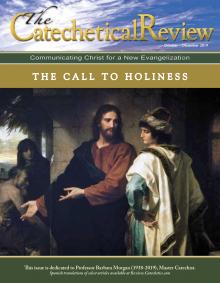This mysterious painting by Leonardo depicts a non-biblical meeting between Our Lady, the Christ Child, and an angel with St. John the Baptist in a rocky grotto. It is the second version of a painting originally commissioned in 1483 to be the central panel of a large altarpiece for the Franciscan Confraternity of the Immaculate Conception in Milan, Italy. While the subject of the Madonna and Child with an infant St. John the Baptist was celebrated throughout the Renaissance, the presence of St. John in this particular setting makes the inspiration for the painting difficult to assess. Though the infant St. John is not recorded as being present in Scripture, Leonardo’s version could possibly be following a medieval tradition of portraying the Holy Family during their flight into Egypt, hence the rock-strewn landscape. While the exact source of the narrative is uncertain, the painting’s rich iconography and harmonious design contain a wealth of meaning. In addition, the unique method of observation Leonardo has employed to the scene sets the painting apart from other artists’ interpretations of the theme.
An Extraordinary Scene
Our Lord is sitting on the ground supported by an angel. The position of Mary’s hand above the Infant’s head as well as her drooping cloak, which stops just short of his extended right hand, produce a vertical movement within the composition that stresses the Christ Child’s importance. Both Christ and the angel look in the direction of St. John; a silent dialogue we are blessed to witness. The environment around them serves to reinforce their otherworldliness. Clark adds, “Like deep notes in the accompaniment of a serious theme the rocks of the background sustain the composition, and give it the resonance of a cathedral.”[9] The fantastical nature of this “cathedral” of caverns points to the profound mystery of the beings in this drama. It is not strange for its own sake; rather it heightens our awareness of the supernatural. The rocks themselves are standard symbols of Christ. Revisiting Ferguson, this attribute “is derived from the story of Moses, who smote the rock from which a spring burst forth to refresh his people. Christ is often referred to as a rock from which flow the pure rivers of the gospel.”[10] The cool body of water in the background recedes into a far-off misty mountain scene not unlike a landscape one would find in J.R.R. Tolkien’s Middle Earth. Leonardo’s imagination seemed to know no bounds.
It was an imagination informed by his relentless investigation of the natural world. To heighten the aforementioned three-dimensionality of the painting, Leonardo incorporates his perceptive studies of light, shade, and perspective. These studies can be read in the publication of his numerous notebooks. He writes, “Painting is concerned with all the ten attributes of sight: darkness and light, solidity and color, form and position, distance and nearness, motion and rest.”[11] This painting contains all of these elements. When the results of Leonardo’s explorations into sight and of the natural world are united with religious subject matter, the effect is a true masterpiece of sacred art.
The rest of this online article is available for current Guild members.
This article is from The Catechetical Review (Online Edition ISSN 2379-6324) and may be copied for catechetical purposes only. It may not be reprinted in another published work without the permission of The Catechetical Review by contacting [email protected]

















